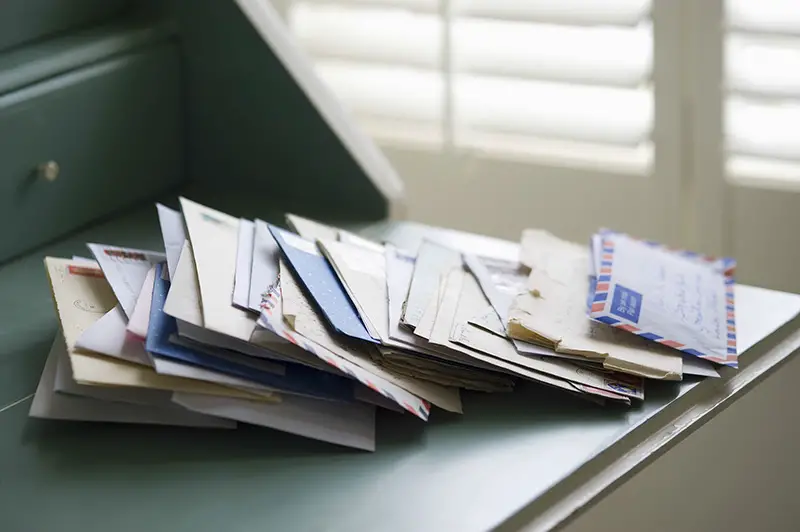Click here to get this post in PDF
The proper addressing of a business envelope helps to guarantee that your message reaches its intended recipient promptly. Standard correspondence management procedures must be followed, especially when your business sends a letter to another business with numerous divisions. Failure to provide complete information means that reaching the right person or department will take longer than usual.
According to the USPS.com online postal explorer, certain mails passing through the United States Postal Service (USPS) have the ability to make delivery challenging, delayed, and cost the post office time and money. This is due to senders who frequently misunderstood the proper order of address lines, formatting, and even mail handling. Similarly, the world of online invoicing faces its own set of challenges when incorrect or incomplete billing details lead to payment delays and operational inefficiencies. To ensure smooth transactions and timely payments, it’s crucial to grasp the significance of accurate address information. For more insights on optimizing your invoicing processes and enhancing your business’s efficiency, you can click to visit the website.
Importance Of Knowing How To Address An Envelope
Most individuals or businesses don’t know that the postal service has standards for a mail address. Consequently, it’s a must for companies and even sole-traders to know the how-tos in addressing an envelope. In addition, to guarantee timely delivery, it’s essential to verify that your address format and block position accurately address an envelope. Here are some important things you need to take into account when addressing an envelope:
1. Importance of Writing The Complete Return Address
Print out or write your name, business name, and return address in the top-left area of the box, if you don’t use printed envelopes that match your corporate stationery. The return address is also acceptable, but certain mailing service such as US Postal Service prefers to write it at the front. Additionally, ensure that you write correctly to ensure that the address is legible. Using cursive or an italics typeface may put a strain on the carrier’s eyes.
On certain kinds of mail, the return address isn’t required. However, missing one would prohibit a postal service from returning undeliverable parcels to an addressee. Apart from that, a damage, an overdue postage, an erroneous address, and suchlike mailing faults shouldn’t be overlooked. mailing faults shouldn’t be overlooked.
2. Importance Of Writing Details In The Upper Left Corner
In addressing an envelope, print your name, company name, title, and address oon the top left corner of the package if your business doesn’t use preprinted envelopes. Even if you use envelopes with the return address of your business, you may wish to place your name above the preprinted area. If the postal service returns the envelope for any reason, it may be redirected by your mailroom to you if your name is shown on the envelope.
3. Importance Of Writing Correct Details In The Center Of The Envelope
In the center of the envelope, write the intended recipient’s name on the top line. The second line should provide the street address and the third line should contain the city, state, and zip code. An extra line may be required to provide the business’s name or a unit of the location, such as an apartment or suite number.
Also, ensure that any directions are included, such as NW (for northwest); several towns and cities have numerous streets with the same name differentiated only by an intercardinal direction.
A similar procedure happens when an envelope is delivered to a European destination or other international destination. Start with the recipient’s name and title in the first line, followed by second line street address, city, province, and state in third line. The last line should include the nation’s name in capital letters.
Foreign language addresses are acceptable if they include the city, province, and nation in English. Again, the last line of the address is designated for the country’s name—spelled out in capital letters followed by the international postal code (if applicable).
4. Importance Of Following The Guidelines
Since, a maail isn’t handled as it was 30 or 20 years ago, and postal services have evolved. Envelopes containing unclear or incorrect addresses may not be delivered. To avoid such from happening, here are a few more reminders:
- Whatever is printed on the envelope’s face should be in all capital letters. While most mail is delivered and carried without capitalized letters, it’s preferable to uppercase each line of the address.
- Only the recipient’s complete legal name should be included. Postal service like USPS and the likes, might not favor any other name on the front of the envelope, whether it’s a nickname or initials.
- If you’re aware of the individual’s work title, provide it on the second line. If you lack this information, use the department’s name.
- The address of the company should be provided in one line. If the address is too long, split it into two distinct lines and include the street name in the first address line and keep the zip code in mind.
- Remember to write the name of the business or organization in which the addressee works. Without this information on the envelope, it’s possible that your letter may not be delivered to the intended recipient. If you’re uncertain about the name of the receiver, you may put ‘Attn: Marketing Manager.’
- Bear in mind to provide the appropriate ‘attention to’ information in the address. Using ‘ATTN:’ or ‘Attention’ emphasizes the specific recipient of the package. If you don’t know an exact name, jot down the title of the job. This note should be placed before the recipient’s street address.
- If you’re writing the address on the envelope by hand, be sure your handwriting is legible. If you make a mistake along the way, it’s advisable to create a new one. A disorganized written address conveys to the receiver your lack of concern.
- When possible, provide the ZIP+4 Code. This comprises the standard five-digit ZIP code, a hyphen, and four extra digits. The extra digits assist the Postal Service in locating the receiver.
- Avoid using commas and periods and use a clear pen or a permanent marker in writing the details.
Conclusion
If you want to get your letter quickly and correctly, you may follow the guidelines in mailing your letter. A well-managed envelope facilitates the lives of every business and helps to guarantee that the item reaches the person it should get in record time. Just remember these guidelines on writing correctly in an envelope when you send your letter to post mail.
You may also like: 8 Ways Address Validation Can Help Your Business
Image Source: stock.adobe.com


